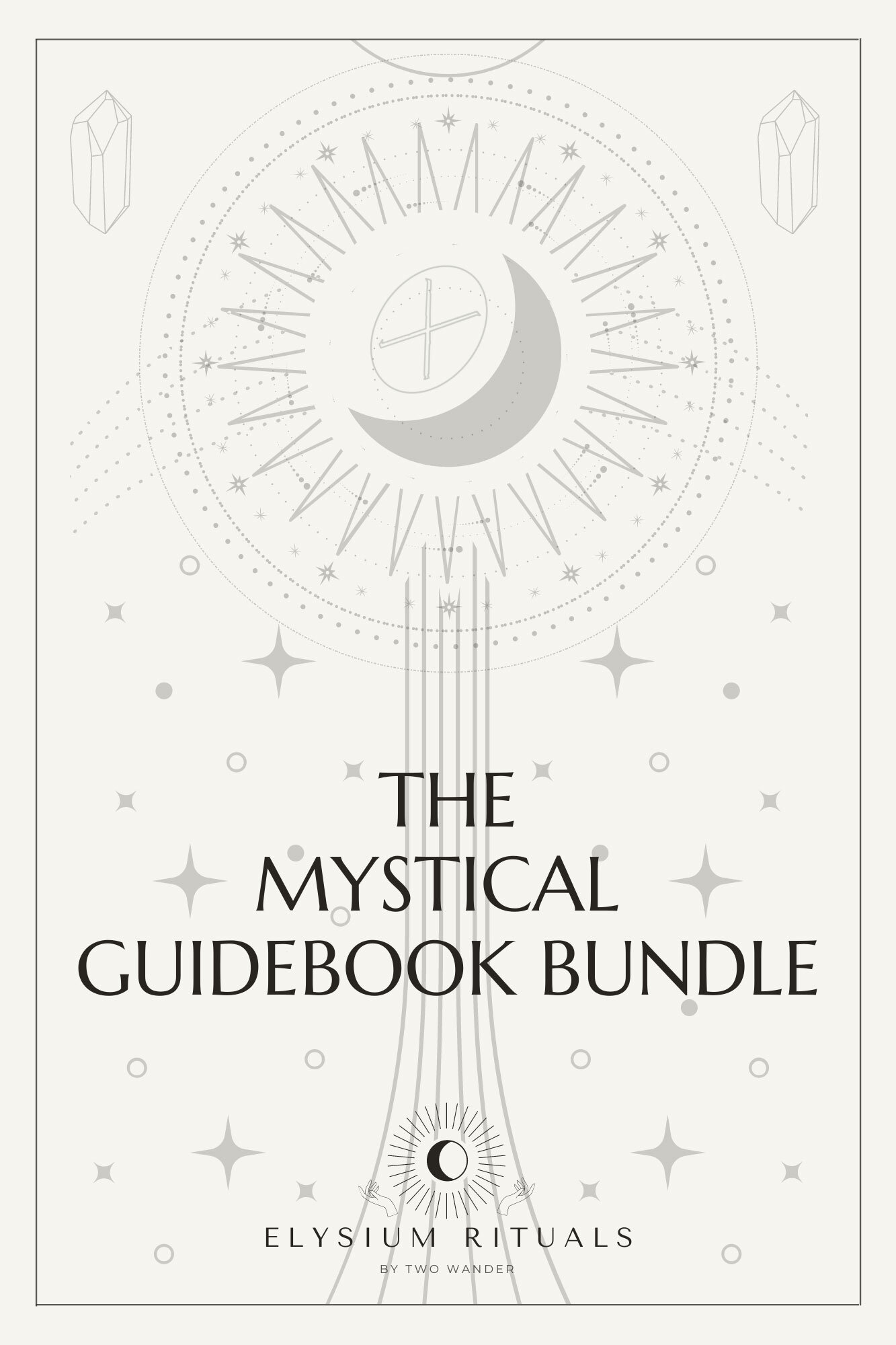An Overview Of 8 Astrology House Systems
This post might contain affiliate links. If you choose to purchase through these links, we may receive a small commission at no extra cost to you. By using these links you are directly supporting our ability to share our mystical musings, thank you!
An Overview Of 8 Astrology House Systems
Astrology House systems are methods for dividing up the sky into an Astrology Chart to be interpreted. They take the sky as a 360º whole and use different calculations of division to get the Astrological Houses, cusps, and other important points. The Babylonians may have been the first to set out the concept of House division, and Whole Sign Houses appear to be the first most widely documented ones, originating in ancient Hellenistic (developed by Alexandrian Astrologers) and Indian Astrology.
There are at least 20 different House systems created, in this post I will discuss 8 of the most popular versions in use today.
Read on for an overview of the main Astrological House systems:
What Are The Astrology House Systems
Each system holds its own value and will offer a different perspective. Sometimes the final Natal Chart can be similar and sometimes it can result in significant differences. Test each one out with your own birth chart and those of people you know to see which version resonates most for you.
When getting a Natal Chart reading, the personal interpretation of the Astrologer will also largely come into play, I personally think a skilled Astrologer will be able to give you a reading that resonates with any House system. For this reason when choosing an Astrologer, it is important to find someone who is aligned with you values.
There are several systems of division: in most, the ecliptic is divided into Houses and the Ascendant marks the cusp, or beginning, of the 1st House, and the Descendant marks the cusp of the 7th House. Many systems, called Quadrant House systems, also use the Midheaven (MC) as the cusp of the 10th House.
For more information on what each one represents, check out our post on The 12 Astrological Houses.
Most systems take the Planetary ruler of the Sign on the cusp to be the ruler of that House. For example, if you have Gemini on the cusp of 6th House, Mercury is the ruler of the 6th House. Read more about the Characteristics of the Planets here.
There are generally three different types of Houses systems: ecliptic, spatial, and temporal. Below I will discuss popular ones in each.
The Astrology House Systems:
Placidus
This is a temporal system first mentioned in the 13th century in Arab literature, although the first confirmed publication was in 1602 by Giovanni Antonio Magini. It was popularized by the Catholic Church as an argument for Ptolemy's geocentric theory of the Solar System in the campaign against the heliocentric theory.
Placidus, a professor of mathematics, was named as its author to give it credibility to his contemporaries. It is currently one of the most popular versions in use today.
It works by marking the House cusps in two-hour increments from your birth time. The degree of the Zodiac Sign rising on the Eastern Horizon at your time of birth marks the cusp of the 1st House.
After roughly two hours, another measurement is made to see where that degree is now: that marks the cusp of the Twelfth House, and so on. Because each one is proportioned according to the amount of time the Signs spend on the horizon from the perspective on Earth, it results in Houses of unequal size.
This allows for the tilt of the Earth relative to the ecliptic - so the Houses become more distorted as the location of birth gets nearer to the North and South Poles, which can become quite disproportionate if you are born far up or down in the Northern or Southern Hemispheres!
2. Whole Sign Houses
This is the system that I use. It is a non-quadrant, ecliptic system and the oldest system from traditional Hellenistic Astrology developed around the 1st Century BCE, which is increasing in popularity more and more.
One of the main things I like about this system is that it has a floating Midheaven which can put this point anywhere in the 8th to the 12th House (and the Imum Coeli in the opposing Houses, 2-6), allowing for more detailed nuance when looking into the career path (or home life) of a native. It is also used in Indian Astrology.
In the Whole Sign system, sometimes referred to as the Sign-House system, each House is exactly 30° each. The first House begins at zero degrees of the Zodiac Sign in which the Ascendant falls. The next Sign after the Rising Sign then becomes the whole second House, the Sign after that the 3rd House, and so on.
In other words, each House is wholly filled by one Sign. It is a really useful system for learning how to read Natal Charts because of its simplicity. It’s also essential to use this House system when using any ancient timing technique such as Annual Profections and Zodiacal Releasing (it is also the system in which most horoscopes are written)!
3. Campanus
This is a spatial House system used by popular Astrologer, Jessica Lanyadoo. It results in wildly varying sizes and what’s known as intercepted Houses where one is completely inside a Zodiac Sign, sandwiched by two other Zodiac Signs. This can add an interesting layer of nuance and meaning to an interpretation. The prime vertical (the great circle taking in the zenith and east point on the horizon) is divided into twelve, and these divisions are projected on to the ecliptic along great circles that take in the north and south points on the horizon.
4. Porphyry
Porphyry is another spatial system sometimes attributed to Vettius Valens, dating back from the 2nd or 3rd Century. It stays on the ecliptic and keeps the Midheaven as the cusp of the 10th House. Each quadrant of the ecliptic is divided into three equal parts between the four angles.
This is the oldest system of quadrant style division. Instead of dividing the space between the Midheaven and Ascendant to find where Houses eleven and twelve begin, like in Placidus, it uses the time it takes for the Sun to move from its rising position to its noontime position. This timeline, called a diurnal arc, is then divided into equal thirds. The same process is done for houses two and three.
As Porphyry prioritises the angles of the chart (the Ascendant, Descendant, IC, and MC) as the 1st, 7th, 4th, and 10th cusps, respectively, and many people see these four angles as the most powerful parts of the Natal Chart, they may prefer to use Porphyry over Placidus in which the angles may fall between Houses.
-> Read more about the importance of your Rising Sign here!
5. Equal House
This is one of the most popular versions in Vedic Sidereal Astrology. The difference between Equal Houses and Whole Sign Houses is that in Whole Sign Houses the cusp of the 1st House is the beginning of the Sign that contains the Ascendant, while in Equal Houses the degree of the Ascendant is itself the cusp of the 1st House.
In the Equal House system the ecliptic is also divided into twelve divisions of 30 degrees but it begins with the Ascendant, which acts as the cusp of the 1st House and then the 2nd House begins exactly 30 degrees later, and so on. Proponents of this House system may prefer it as it is less distorting at higher latitudes (especially above 60 degrees) than Placidus or other quadrant systems.
6. Koch
Another time-based system, the Koch system is like a development of the Equal House system, in which all the Houses are thirty degrees but is defined by horizon lines at different times on the day of birth. Using the timespan that the MC has spent above the horizon, the cusp of the 12th House is where the Ascendant was when 1/3 of this time had passed, the eleventh House cusp is where the Ascendant was when 2/3 of that time had passed, and so on. It assigns special significance to the MC-IC axis, because the measure of division is predefined by the diurnal arc of the Zodiacal degree of the MC at birth.
7. Alchabitius
Also a time-based system, the predecessor system to Placidus (which in turn largely replaced Porphyry). The difference with Placidus is that the time that it takes the Ascendant to reach the meridian is divided equally into three parts. It divides the diurnal arc of the Ascendant into six equal-sized segments. Then, Meridian circles are drawn through the resulting segments. The places where the circles intersect the ecliptic mark the cusps of the Houses. The other cusps can be calculated by adding 180° respectively. The Alchabitius system was popular in Europe before the introduction of the Regiomontanus system.
8. Regiomantus
This is a spatial system like Campanus but in the Regiomantus system the celestial equator is divided into twelve, and these divisions are projected on to the ecliptic along great circles that take in the North and South points on the horizon. This system was largely replaced by Placidus.
->If you would like me to personally interpret your Natal Chart using the Whole Signs system, book in a Traditional Astrology reading with me!
So that’s an overivew of the 8 most popular House systems in Astrology, I hope it’s useful for you! Let me know which one is your favourite and why in the comments section below, or if you have any questions or anything else to add.
If you would like to learn more about the Houses, and more, get our Cosmic Guidance: Astrology 101 Course or our Astrology + Natal Chart Guidebook!
For your daily horoscope get your Zodiac Sign Year Ahead Report or The Astrology of 2024. For live monthly Astro magic— join us in the Spirit Subscription; and for a weekly horoscope, sign up to my mailing list below! ✨


























